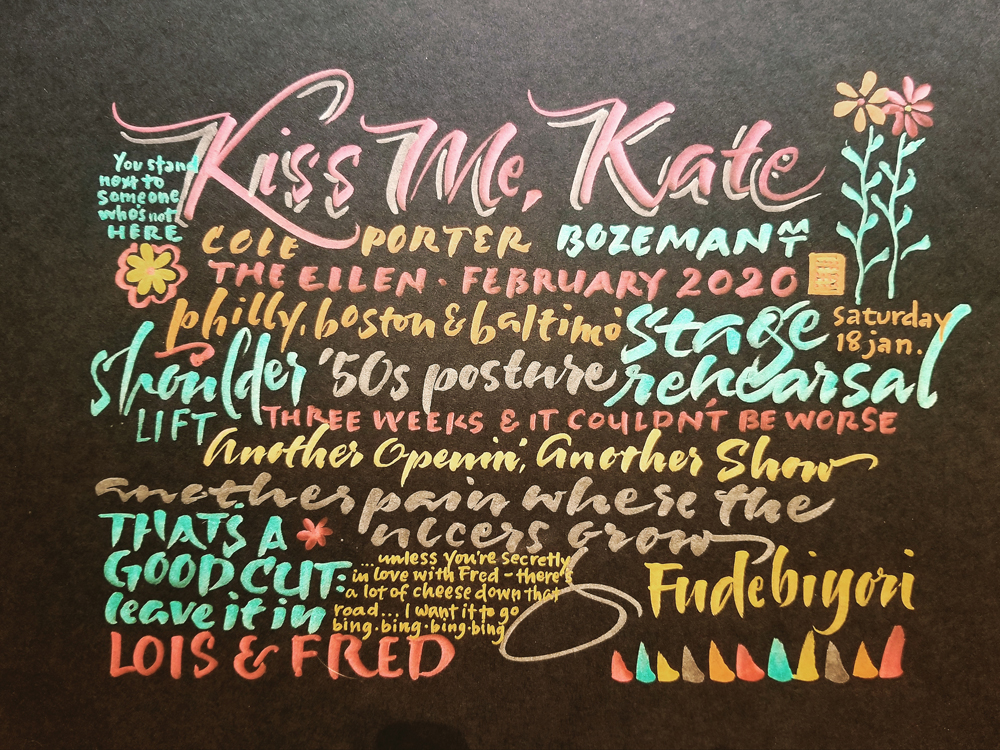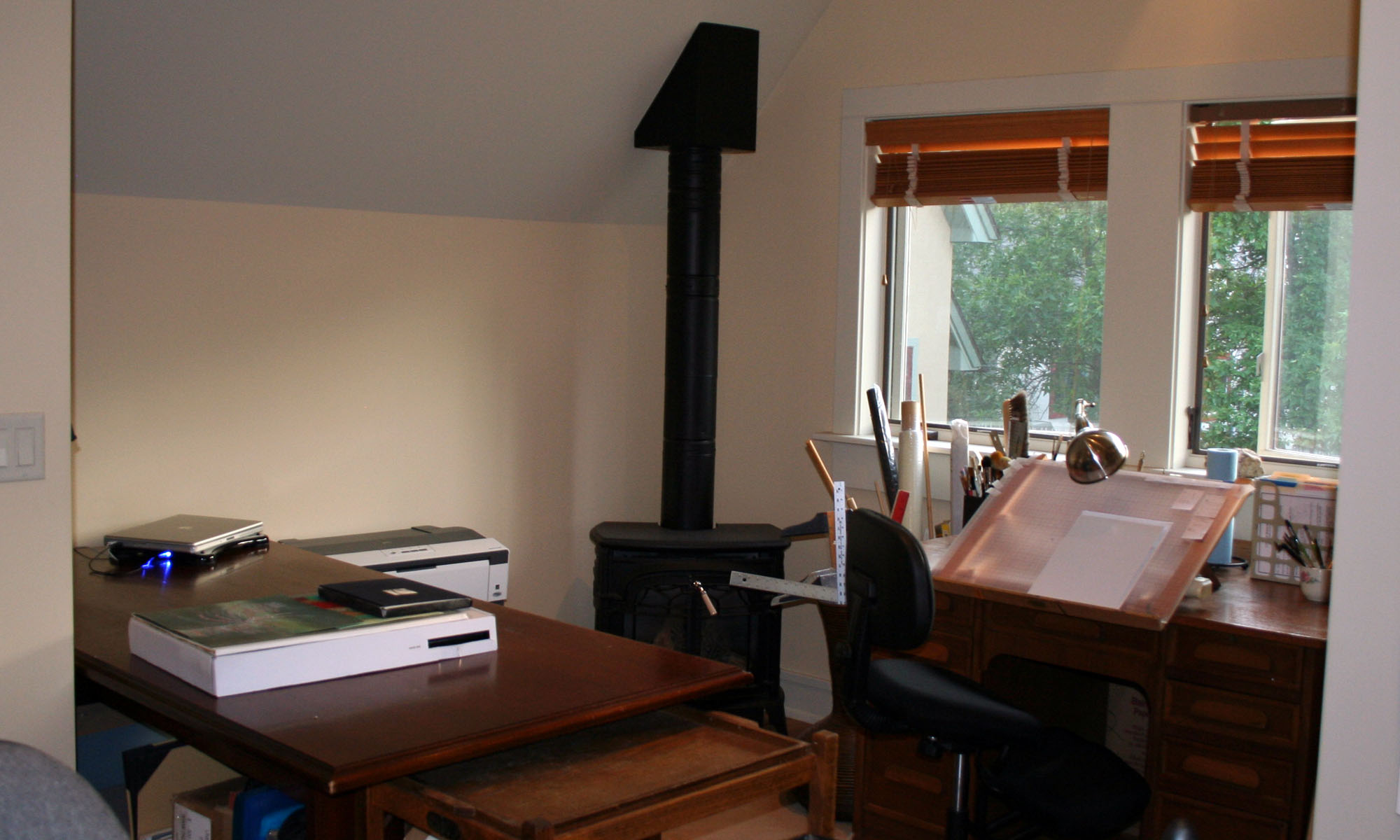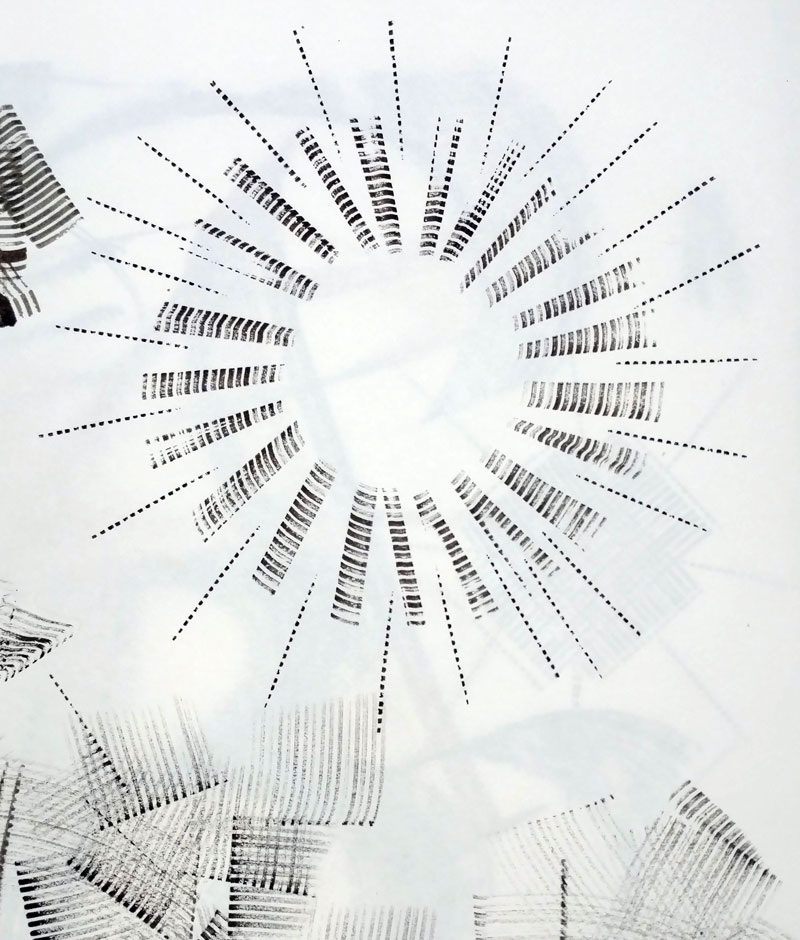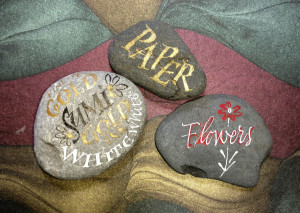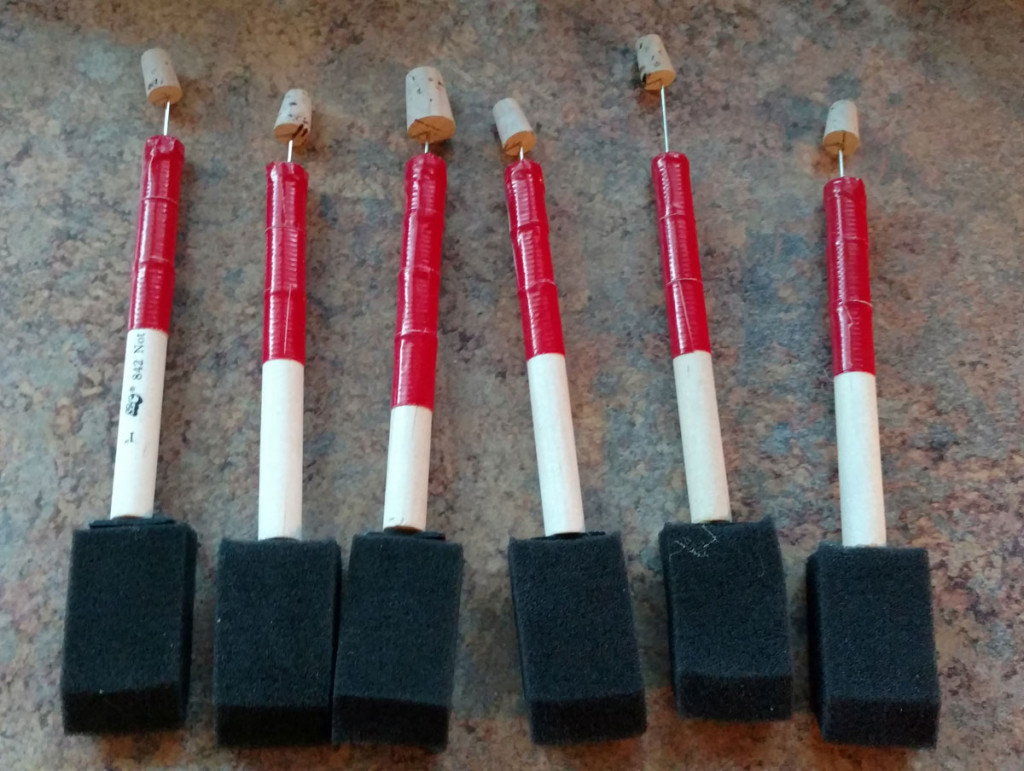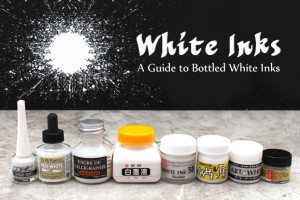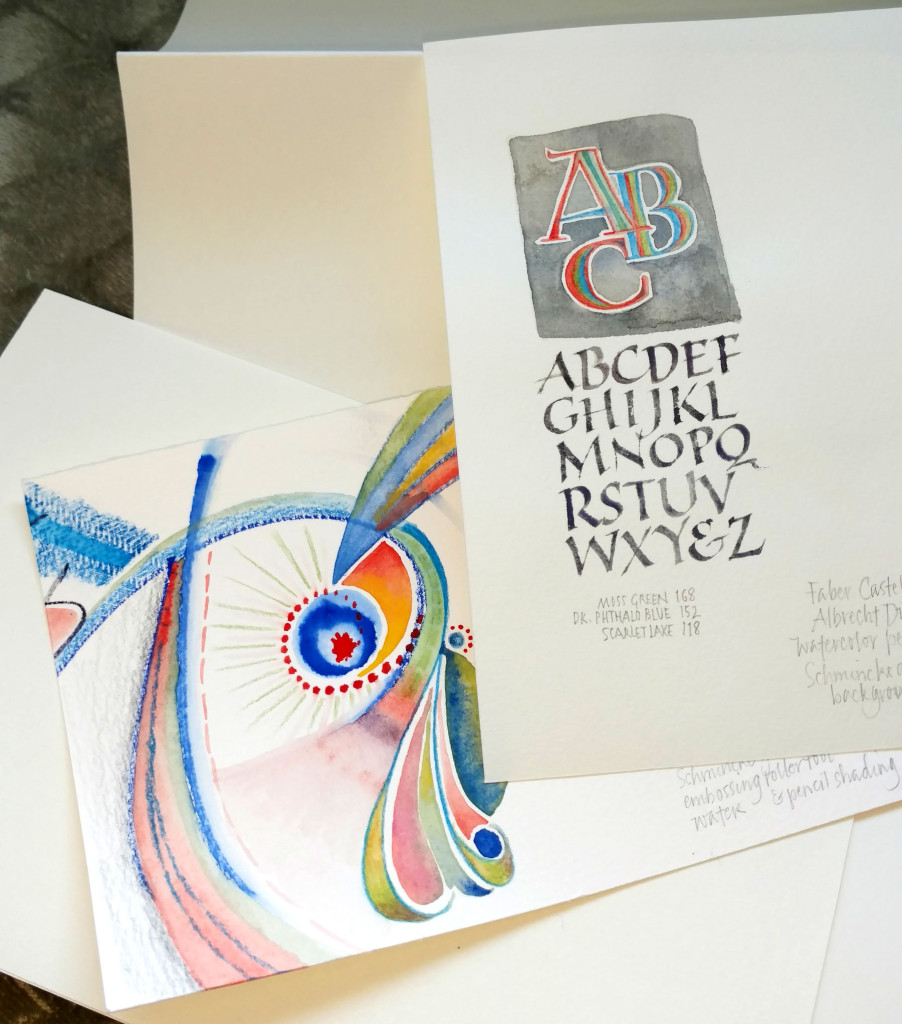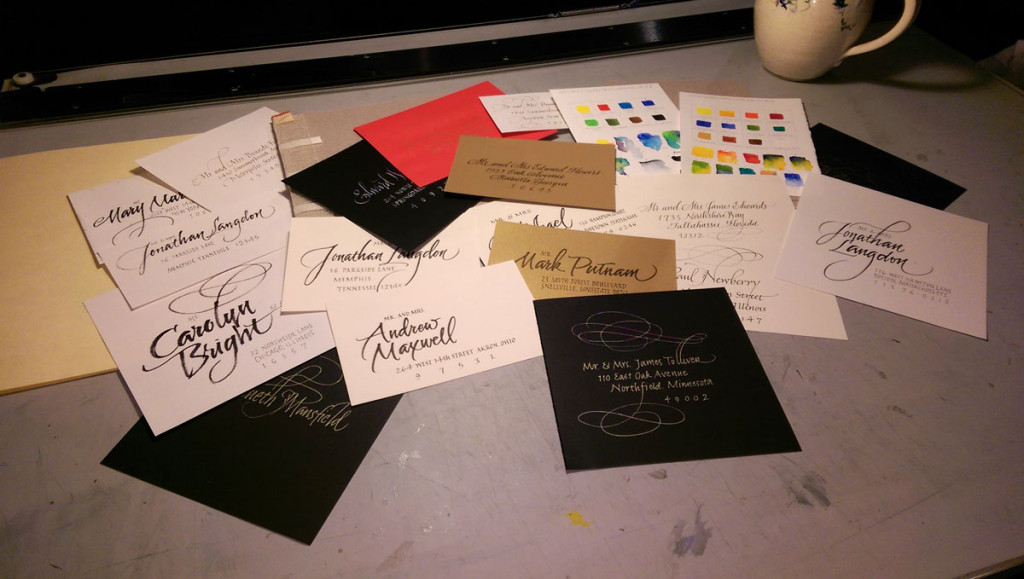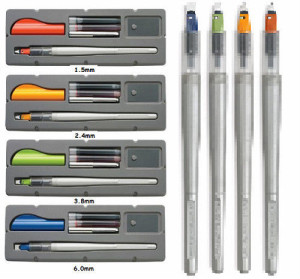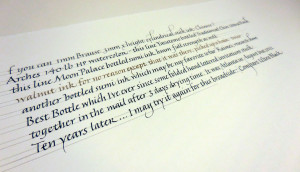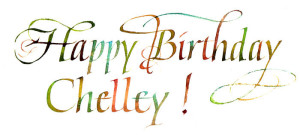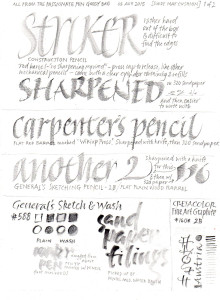
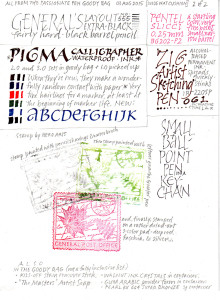
One of the many fun things about the annual calligraphy conference is the goody bag. It’s always packed with interesting tools, samples, information, and ideas. At The Passionate Pen, I never got a chance to go through the goody bag in any depth, so I packed it up with all my other art supplies at the end of the week. Today when I unpacked it in my studio I couldn’t just put away all those shiny toys without finding out about them, at least a little. Here are the results of those explorations.
Pencils were very big this year in the goody bag. We got three different kinds of broad-edge pencils, a wash pencil, a couple of sketch pencils, and more. Then there was the ZIG Artist Sketching Pen with its alcohol ink, the little ballpoint pen/keyring, a stamp, 2 sets of Sakura Pigma Calligrapher markers (plus a 1mm set that I picked up at the trade show in return for proof that I had experimented with the 2mm and 3mm sets), and a shocking pink gel pen.
Other tools included artist soap, KISS stain remover (which many calligraphers swear by), gum arabic powder, walnut ink crystals, Pearl Ex metallic powder, and a rubber stamp. It was fun trying most of this stuff out.
And, um, I never did finish unpacking.
Like this:
Like Loading...
